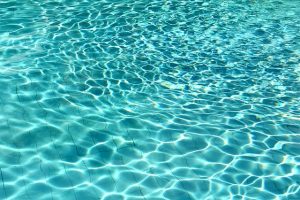There are many wonderful advantages to owning a pool in South Australia. Hot summer days are turned into wet fun in the backyard, and the added beauty of the sparkling water adds tranquillity to anyone’s personal life.
But all the fun and all the beauty can abruptly end if proper safety and maintenance are not adhered to – Read on for top swimming pool maintenance tips for South Australians.
SA Swimming Pool Maintenance Guide, Plus Tips
 Pool Safety Barriers
Pool Safety Barriers
Drowning is the most common cause of accidental death for young children. Backyard swimming pools are the main culprit. Before you install a pool or buy a home with a pool, familiarize yourself with the legal requirements for pool safety.
One of the main safety objectives is a barrier. The standards for safety barriers have changed over the years. Older homes may not have the safest pool barrier standards in place. The newer standards are better at preventing unknown access to the pool. If you have an older pool, you may want to update your pool area to ensure the safety of your family and neighbours.
 Pool Maintenance
Pool Maintenance
Pool maintenance also has a large part to play in pool safety. When you have a home with a pool, you must calculate the cost beyond the water, electricity, and chemicals. The filtration system is paramount to maintaining a clean pool. If the pump breaks or a suction fitting or drain cover breaks, several safety issues arise.
Unsanitary water can develop, or possibly the filtration system can suction hair or limbs, entrapping a person underwater. Repairs like these can be pricey and are often not DIY projects.
Regular vacuuming is another required task. Fortunately, new self-propelled vacuums can clean your pool all day long with little assistance from you. Just be aware, again, that this is another expense that cannot be ignored.
 Chemical Treatment
Chemical Treatment
Commonly, most pools are kept sanitary by the use of chemicals. A combination of chlorine and other supporting chemicals are used to maintain the alkalinity. This is not a one-and-done event. The pool water must be tested regularly. Sun and rain both contribute to the condition of the water.
Chlorine
Chlorine is the most common pool chemical used to kill bacteria. It is added according to the size of your pool and must be used daily. You can use too must chlorine as well. This is also unhealthy, causing skin damage and even urinary issues. Follow your pool manufacturer’s instructions to maintain your pool’s chlorine levels. If you do not have the pool installation documents, contact your local pool store for help to identify your pool’s requirements.
pH
You want to ensure that the pH level of your pool water is checked before use and at intervals throughout the day. The recommended pH level for pool water is 7.2 to 7.6. If the pH is too low, add soda ash and then re-test. If the pH is too high, use pool acid and then re-test.
Total Alkalinity (TA)
The TA in a pool is also a necessary balance to keep. You want TA levels to sit between 60 and 200 parts per million to avoid surface erosion. Sodium bicarbonate will raise the TA in the pool. If TA levels are too high, pool acid is used to bring them back to acceptable levels.
Calcium Hardness
Dissolved calcium in a pool should be 80 to 500 parts per million. To be sure your water is at the best levels, most pool shops will provide a testing service that only requires you to provide a sample of the water from the pool.
We hope you enjoyed our swimming pool maintenance guide and tips. For more swimming pool tips, read The Benefits of a Magnesium Pool vs Chlorine , Pool Maintenance in the Off Season and outdoor water saving tips in South Australia.
Just purchased a new home with a pool? Houspect SA offers leading building inspections in Adelaide, New Home Inspections in Adelaide and Pre Purchase Building Inspections.







